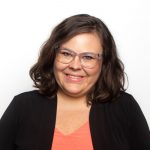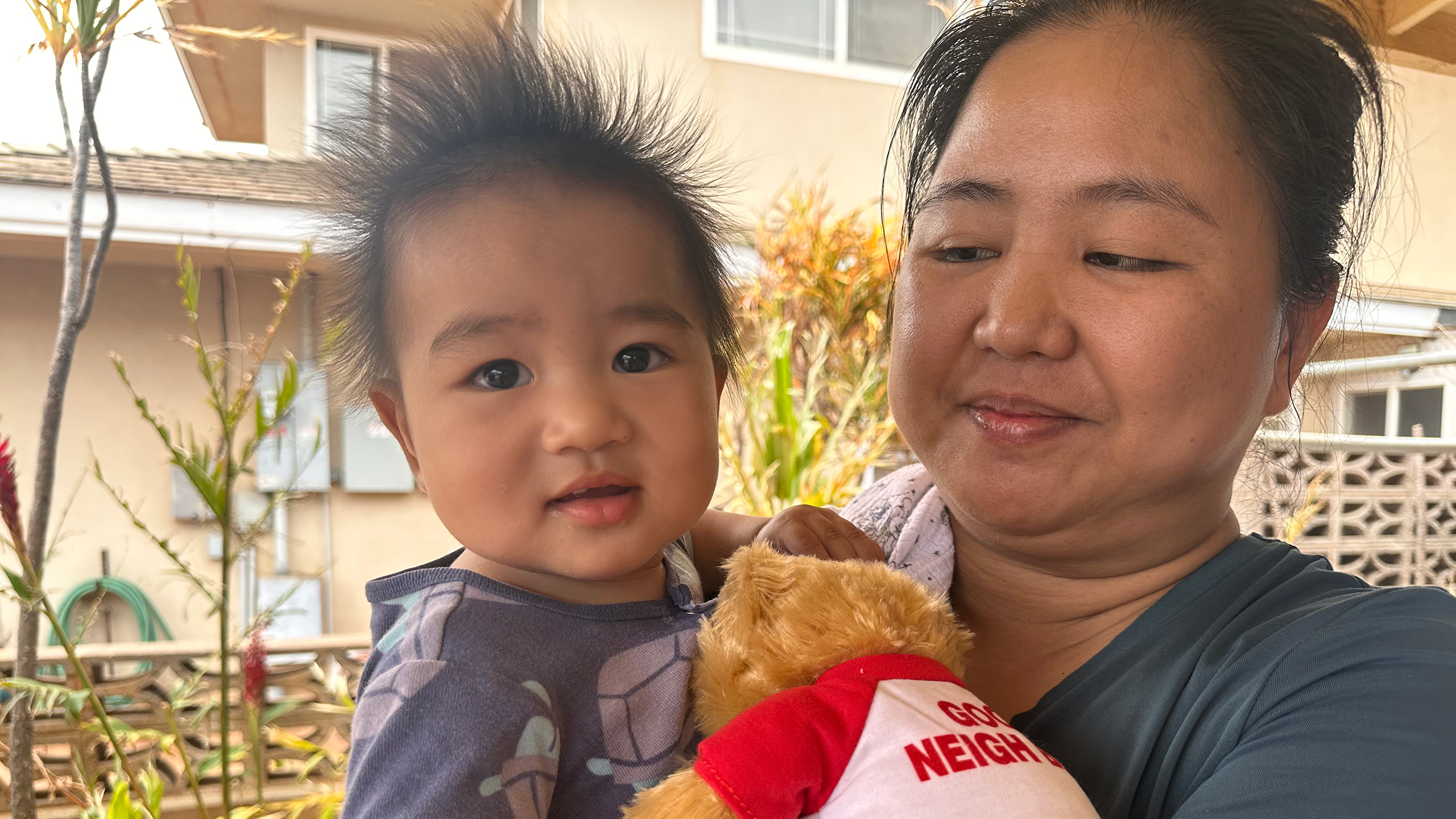There were children in Lahaina as fires razed the historic town of 13,000 people on August 8. One survivor fled the fires on foot with her 9-, 13-, and 15-year-old children, and told Reuters of an elderly couple who handed her a baby and pleaded for her help escaping over a fence. One survivor told the Washington Post that she watched a couple run barefoot down the street while pushing a stroller to escape the fires. A man told the Associated Press that several of his family members, including his cousin and his cousin’s seven-year-old child were found dead in a burnt car. Public schools had canceled classes due to high winds on the morning of the fires, leaving many Maui elementary teachers fearing that some children were home alone while their parents worked.
Local officials continue to face difficult questions about their response. Why have the number and magnitude of wildfires on Maui increased so rapidly? Could more have been done to eliminate invasive grasses that are thought to increase wildfire susceptibility? Should the electric company have cut power on the morning of the fires due to the high winds? Why weren’t the community’s sirens, built originally to warn the community of tsunami danger, used to warn residents of the fire? There will plenty of blame to share.
The number of confirmed dead is now at 115 and is expected to climb, making it the deadliest wildfire in the U.S. in more than a hundred years. Meanwhile, at press time, 388 people are listed as missing. Hawaii governor Josh Green told the press that it’s possible there are “many children” among the dead.
Those families whose lives were spared by the fires face other horrors. For many, their homes and all their possessions were destroyed in a matter of hours. Where will they sleep? Where will their children go to school? Who will care and educate their youngest children as they attempt to rebuild their lives and livelihoods? And by this week, as K-12 schools reopened, many teachers and parents wondered just how these children would recover from the trauma of returning to schools and child care centers with classmates and family members forever missing?
This is parenting in 2023. This is child care in the age of climate disasters. The tragedy in Maui raises a further question for not only our local, state, and government officials, but for all of us: With parents clearly unable to shield their children from the ever-expanding list of climate threats on their own, how can we rebuild our systems to promote young children’s safety, health and well-being?
More than 3,000 buildings were destroyed in the fires. According to national child care network Child Care Aware, that number includes four of the nine licensed child care centers in Lahaina. At least 150 child care slots were affected by the fires, according to PATCH, Hawaii’s child care referral network. PATCH began working immediately with local providers to create and publicize available slots, and to donate infant formula, diapers and financial resources to families and providers who need it.
PATCH’s Interim Executive Director Carol Wear said, “The impact of the fires has caused considerable distress among both the staff and the children under their care. To address this, local organizations specializing in infant mental health have been offering support to some of the affected centers.” PATCH is working with national partners who bring expertise and training when confronting such emergencies, and they’ve found they are not alone. They are leaning on a variety of local and national allies for support.
Climate Disruption and Children
According to a recent report by Inter-Agency Network for Education in Emergencies, an open network of representatives from NGOs, UN agencies, governments and academic institutions, the disruptions caused by climate disasters can have long-lasting and devastating impacts on children, including their health, both physical and emotional, their access to nutritious food, their access to responsive caregiving, learning opportunities, and their safety and security.
The United Nations’ World Meteorological Organization has found a fivefold increase in weather-related disasters in the past fifty years. UNICEF reports that over one billion children on the planet are currently at risk of climate disasters, including fires, typhoons, cyclones and hurricanes.
Elliot Haspel, director of Climate and Young Children at the think tank Capita, says early education, like many of our systems, is underprepared for the consequences of climate change. “But unlike some other systems,” Haspel said, “early education is working with an acutely vulnerable population, a population that is essential to building a resilient and happy future.”
Haspel points to FEMA and other interagency disaster response plans as part of the reason young children are particularly vulnerable. That lack of inclusion of early education systems is at least in part a result of how fragmented child care and early education are in general in the United States. “Although there are over 100,000 schools in the United States, they’re organized into districts and have a central office that an agency can coordinate with. Unfortunately, that’s not the case for the early years,” said Haspel.
The millions of small, home-based child care centers and family child care providers across the U.S. are especially difficult to reach, meaning not only that they aren’t included in evacuation plans at the outset of a disaster, but may also not receive the critical resources they need to continue serving families during the recovery period or to sustain themselves beyond it.
Capita and the Aspen Institute co-convene a task force to draw attention to the relationship between climate and the early years of children’s lives. They recommend a strategy that
- mitigates climate change,
- adapts our current systems for our new climate realities,
- and prepares our systems for inevitable losses and damage that will result from them.
What kinds of changes might this result in, in practice? Experts have recommended numerous paths to act:
- focus on mitigation in communities of color, where extreme heat and pollutants are most impacting young children;
- adapt playgrounds and outdoor spaces to withstand climate changes, like providing shade in areas exposed to extreme heat; and in the case of disaster,
- plan for what will happen to children when loss and damages occur, and for how to re-create stability for them as quickly as possible.
Moms Historically Have Led the Social Movements for Kids. Early Educators, too.
But accomplishing any of this will likely require a public groundswell to demand it. After all, despite majorities of Americans supporting federal investments in early education and child care, Congress has failed multiple times to renew pandemic-era funding for early learning and care even as we approach a funding cliff that could close 70,000 child care centers, and as the cost of child care is rising at double the rate of overall inflation. Our children are as vulnerable as they are in the face of climate change precisely because we have historically refused to invest in infrastructure they need.
Parents, especially moms, have forged some of the largest and most successful social movements in modern U.S. history, particularly by highlighting the threat to children’s lives. Since its formation in the 1970s, Mothers Against Drunk Driving (MADD) has helped to enact over 1,000 laws from the local to the federal levels targeting drinking and driving. Moms Demand Action has galvanized a national movement against gun violence and won an impressive number of gun-safety victories, particularly at the state level.
At the local level, the connection between climate change and children’s lives is increasingly being made by concerned parents: Science Moms, EcoMadres, Moms Clean Air Force, Mothers Out Front, Sunrise Kids NYC. As one mother and activist told the New York Times, “I want to be able to say to my kid, ‘We’re trying to do something.’”
Native groups have long drawn connections between protecting the natural environment and protecting the youngest members of our society. With the Akwesasne Mother’s Milk Project, for instance, Mohawk women led research to measure pollutants in their water sources, pointing out that toxins in water would become toxins in breastmilk.
Early educators are also a potentially powerful voice in advancing this struggle, as they have become an increasingly vocal bloc in the movement for federal child care funding and infrastructure. Of all the institutions that young children and their families interact with, it is most often early educators who take on an outsized responsibility for the overall well being of children outside their families, even in the absence of adequate funding and infrastructure.
One of the buildings destroyed in the Maui blaze was a groundbreaking Hawaiian language immersion preschool serving about two dozen Lahaina families. ʻAha Pūnana Leo O Lahaina is part of a larger movement of native Hawaiian educators to preserve the language and culture by teaching children through traditional Hawaiian methods and in native Hawaiian language. According to the network of schools, Pūnana Leo means “nest of voices,” a learning philosophy in which children are “‘fed’ solely their native language and culture much like the way young birds are cared for in their own nests.”
ʻAha Pūnana Leo CEO Kaʻiulani Laehā says that same philosophy is driving the center’s response to the disaster. They are focused first and foremost on nurturing the families they serve, including enrolling displaced families in one of their other locations on Maui and other islands, and raising funds to provide them any resources they may need.
ʻAha Pūnana Leo is also working to provide security and resources to their five displaced staff members. “You can imagine, our staff are incredibly specialized,” said Laehā, “so doing whatever we need to retain them is a top priority.” Laehā added that while some of their educators have been reassigned to teach at their other sites, others are still on the ground on Maui helping with the rescue effort and caring for children impacted by the disasters. Those educators are part of the ʻAha Pūnana Leo “ohana,” or family, just like the children they educate and those children’s families.
The extent of the human loss in Maui is sadly still coming into focus, as search and recovery efforts continue. But the destruction of Lahaina, and so many of its most vulnerable people, will undoubtedly be remembered for years to come as among the most devastating tragedies in U.S. history.
As a public we are only beginning to grapple with what this tragedy means about where we stand as a country and planet, marking the dangers of our present climate, and laying bare our immense unpreparedness for an inevitably growing list of weather-related disasters. The fires should also force us to reckon with just how truly vulnerable so many of our youngest children are, specifically in a warming world, not currently built for them or for their needs.

Haley Swenson
Haley Swenson is a research and reporting fellow for Better Life Lab, the intersectional gender equality and work program at the non-partisan think tank New America. She is also editor and co-founder of Work Life Everything.



